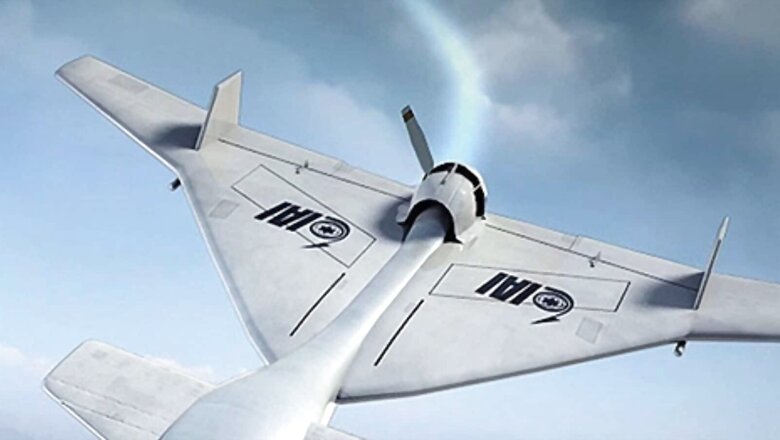
views
The Army is looking to procure 10 sets of medium-range precision kill system (MRPKS) — comprising 120 loitering munitions — for its artillery units to detect, engage, strike and destroy static and moving targets with precision.
Loitering munitions are effectively unmanned combat aerial vehicles (UCAV), popularly known as drones, which can continue to loiter in air close to the designated target, when directed, attack it by self-destructing into it.
A Request for Information (RFI) published on Wednesday by the Army stated that the weapon systems, which will also come with 10 launchers, 30 forward observation stations, should be indigenously designed, developed and manufactured in India under the Defence Acquisition Procedure 2020—the sole manual guiding all capital procurements for the Indian military.
Once launched, the munitions should be able to “loiter” in the air and provide real time imagery on the target to the operator on ground. On the detection of the target, the loitering munition carrying a warhead should be able to strike it with precision, thus reducing collateral damages, the RFI stated.
The MRPKS, the RFI said, should be able to hit targets with precision in day and night operations and in all-weather conditions.
Indian vendors who qualify on the technical, commercial and project requirements of the EoI will be issued a project sanction order to develop a prototype of the system.
Need for Loitering Munitions
In September, the Army had also signed a contract to procure over 100 explosives-carrying drones ‘SkyStriker’ to be manufactured by a Bengaluru-based joint venture between Israel’s Elbit System and India’s Alpha Design.
These loitering munitions, which can detect a target and explode there, were spotlighted when used by Azerbaijan against Armenia last year leading to the latter’s defeat over Nagorno-Karabakh.
The IAF also possesses the Israeli Harop loitering munition.
The latest RFI stated that the future battlefield requirements make the possession of the precision guided munitions to achieve first strike kill a must and this requirement is further fuelled because of the wide spectrum of conflict ranging from sub-conventional operations to full scale war.
What Kinds of Targets Can It Take Out?
Stating that the new systems will be a major capability enhancement for the Army’s Artillery units, the RFI says they should be able to detect and take out static and moving targets across all terrains, including deserts and high altitude areas.
The targets, which these systems would be able to destroy, include command control computer and intelligence installations at headquarters, signal centres and command posts as well as strategic or long range vector weapon system platforms.
They should be also able to engage targets such as radar installations, including weapon locating radar, air defence systems and communication centres, logistics storage depots and special ammunition storage and dynamic targets such as enemy vehicles and troops.
The systems are required to have a range of 40 km. The loitering munitions should have an endurance of minimum two hours, and be capable of hovering in air at an altitude of minimum of 1 km.
It should also be able to carry out a damage assessment with the munition having the capability of aborting a target, re-attack and reuse.
The control station, which is part of the kit, will carry out mission planning, select target and simultaneously control two or more munitions if required.
The loitering munitions should have a shelf life of at least 15 years, according to the RFI.
Earlier this month, the Army had sought to buy 1,966 rounds of 155-mm Terminally Guided Munitions, capable of carrying out precision strikes on identified targets, from Indian vendors. At present, the Army’s Regiment of Artillery does not have any such munition.
Read all the Latest India News here

















Comments
0 comment